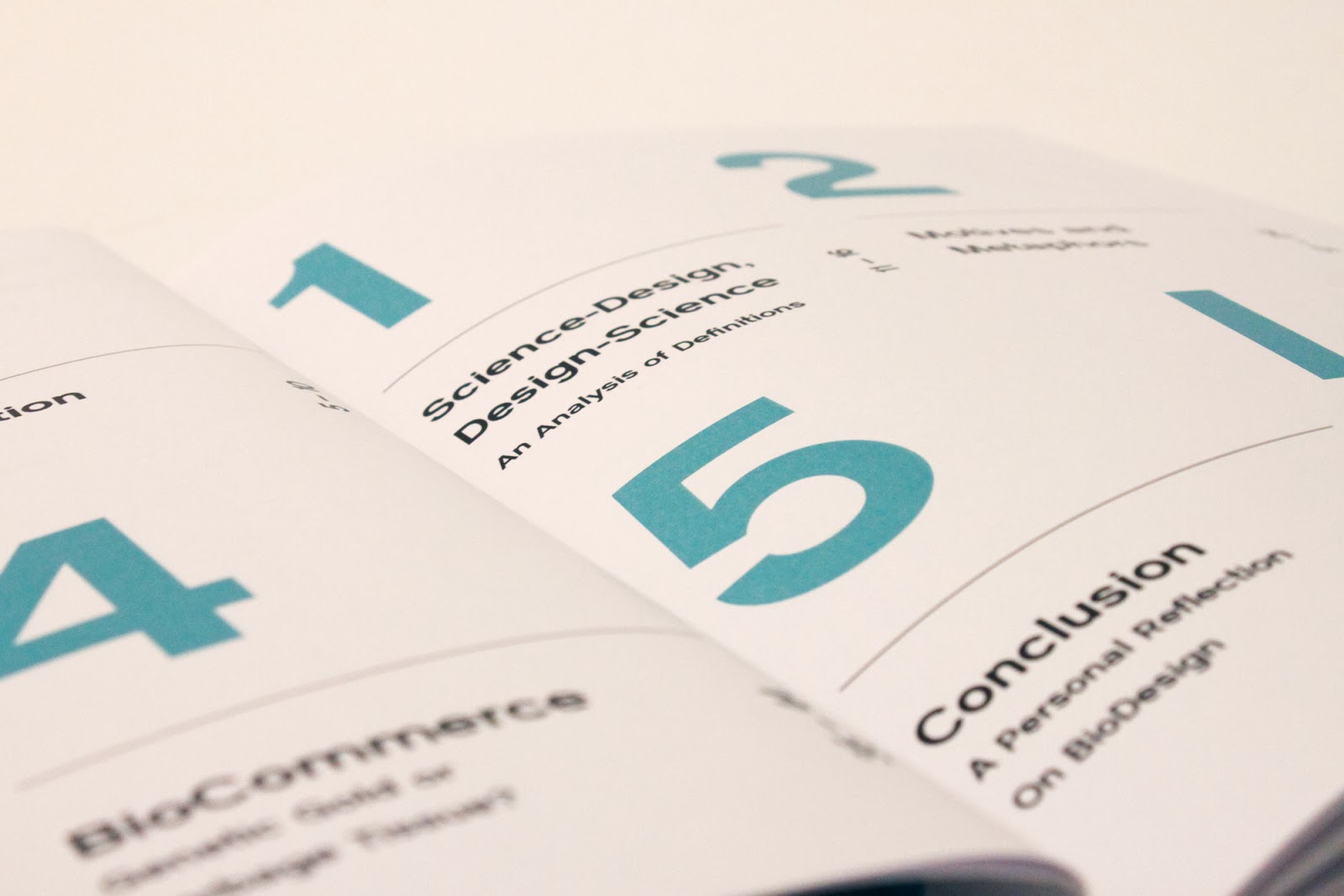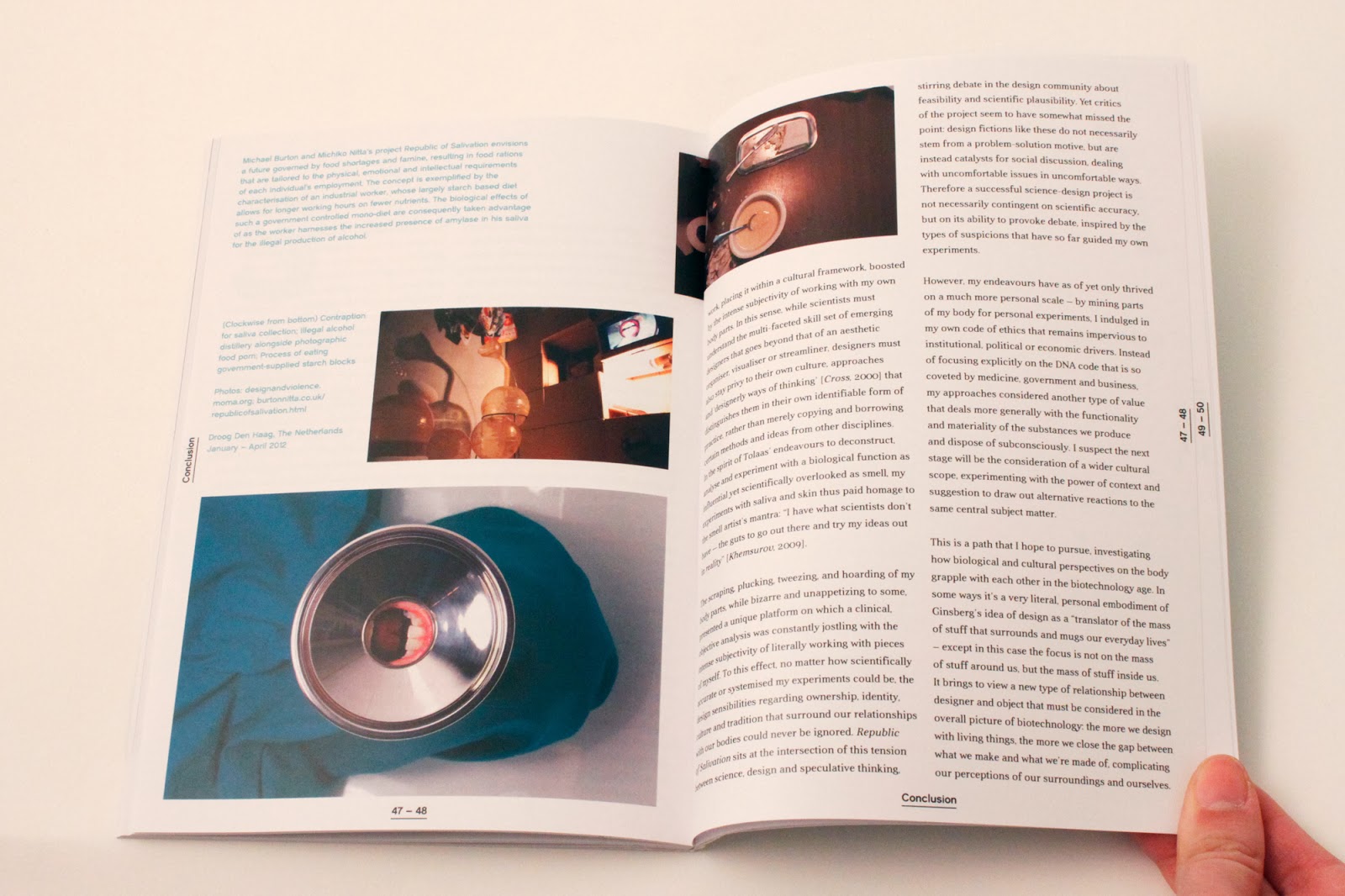Melt blog has now moved! Find the link here for a continued stream of consciousness on science, design and the human body.
Wednesday, February 5, 2014
Monday, February 3, 2014
bio-batteries
A research team at Rensselaer Polytechnic Institute are developing 'bio-batteries' that can run on the electrolytes found in blood or sweat. The battery itself looks like a tiny piece of flexible paper, made up almost entirely of cellulose, and the negative and positive ends are inserted as carbon nano-tubes.
It might come down to something like the image below; I can't find too much information on it but it's apparently a battery that runs on orange juice that you squeeze into it via a little dropper.
Maybe something like this:
Further reading:
http://www.livescience.com/1782-paper-batteries-powered-blood.html
Interesting. I decided to see if my sweat would conduct electricity. It did!
Then I thought there has to be a better way to make this work than with an impossibly inflexible test tube. I decided I would soak my sweat onto cellulose (paper) and see if that works. Which it also did.
I tried connecting several in a row to get a higher voltage with some paper I stuck to myself when I went to the gym, but I don't think the paper was quite soaked enough (or it dried up too quickly) because the voltage didn't go through. I'm going to have to find some kind of super absorbent material that won't interfere with the conductivity but also maintain the moisture for as long as possible.
Before performing this experiment I had envisioned the battery looking something like this
but I'm going to have to revise these drawings; definitely make the functionality a little simpler and also consider how many connections I'm going to need to produce enough voltage that the battery will actually be useful.
It might come down to something like the image below; I can't find too much information on it but it's apparently a battery that runs on orange juice that you squeeze into it via a little dropper.
Maybe something like this:
Further reading:
http://www.livescience.com/1782-paper-batteries-powered-blood.html
Saturday, February 1, 2014
strange instincts
Here's another set of strange machines, focusing on instincts. One enhances our biological instincts, and the other suppresses a mental instinct.
There's something about technology eroding our basic biological desires or functions – Sissel Tolaas often talks about how we mask our natural scents with deodorants. I'm working on machines using saliva and sweat, but the research I've been doing on tears might be relevant here.
Crying can be both reactionary to both a physical and emotional stimulus, and the emotional one especially can be difficult to predict or figure out. It can be manipulated or misconstrued. It has a lot of social connotations. The fact that emotional tears have been shown to reduce aggression or sex drive in men is a kind of instinctual reaction to a social context in which tears are present [bizarre fetishes not withstanding].
Maybe I need to make a machine that pricks a girl in the eyes if she feels nervous or threatened around a man. Or would crying in front of a creepy guy just make the situation worse? It would certainly make the girl feel more vulnerable. Or maybe knowing the effect the chemicals in the tears are having would foster a feeling of secret empowerment.
Wednesday, January 29, 2014
strange machines pt 2
I've been struggling a little bit with the notion of disgust. It's a weird thing to be working with bits of yourself, and there's a real tension between the intense subjectivity of handling your own bodily materials and trying to look at them clinically or objectively. Scraping off skin from my foot and baking it into a lovely sour dough bread has been making me feel particularly conflicted, more so than Saliva of the Fittest for some reason. I couldn't quite pinpoint why, but I think it's the lack of formality to it. Throwing a pile of dead skin into a bowl of flour and water just feels too raw; slightly neanderthal in a way and difficult to validate.
So what it comes down to is the machines. The inspiration that's stuck with me the most has always involved these strange contraptions, and as my mentor said there's nothing like a machine to convince people of something being scientific or 'good.' I think the machines are what will formalise these interactions with the body, verifying the activity that's actually going on on a microbial level.
I made a small compilation of some of my favourite biodesign projects, all involving a type of machine. The term 'machine' is very broad, and in some ways the bread itself could be seen as a type of natural machine, baking and churning and cultivating yeast. I'd just like that organic machinery to be manifested in something more concrete.
I'll keep adding to this list as I find more, but here's a few categories for now.
So what it comes down to is the machines. The inspiration that's stuck with me the most has always involved these strange contraptions, and as my mentor said there's nothing like a machine to convince people of something being scientific or 'good.' I think the machines are what will formalise these interactions with the body, verifying the activity that's actually going on on a microbial level.
I made a small compilation of some of my favourite biodesign projects, all involving a type of machine. The term 'machine' is very broad, and in some ways the bread itself could be seen as a type of natural machine, baking and churning and cultivating yeast. I'd just like that organic machinery to be manifested in something more concrete.
I'll keep adding to this list as I find more, but here's a few categories for now.
Tuesday, January 28, 2014
dissertation
Finally done and dusted with the writing, designing and printing of the dreaded dissertation. I have to say it's been a long and expansive journey, but in hindsight it's actually been rather enjoyable [with some bouts of absolute torture mixed in]. If anything it's been the longest relationship with a single project I've had to date, and if only for that reason it was kind of difficult to say goodbye to it.
So here it is, in all it's glory, behold a 7,000 word long manifestation of my ventures into science, design and the human body.

Thursday, January 23, 2014
hair of the dead
Quick rifle through some of the TransNatural works and came across Contemporary Vanitas, a project suggesting the material use of dead humans to create the products around us: like anything in nature, we cannot fight our mortality and eventual deterioration, and should not expect the same from our things.
The interesting part is that I've been wondering whether they was a way to manipulate hair strands into a type of material that you could actually make things with for a while now, and lo behold here it is: "Mixed with glycerine and sodium sulphite, the hair melts into a type of bioplastic resembling leather."

Not sure if I love the look of the actual product, but there's something about the diagrams that are great, especially the one outlining which elements humans are regularly secreting.
process, new realms, spectacles
Today I've been watching some lectures from TransNatural, a program looking at the where art, design and future technologies intersect. There are quite a few good-looking recent projects I haven't got around to looking at quite yet, but I wanted to get down some thoughts that cropped up when watching a talk done by my tutor Jimmy Loizeau and his partner James Auger.
There are kind of 3 main points that caught my attention when listening to this. The first was their process, the way they approached their investigation in Carnivorous Domestic Entertainment Robots. The individual decisions they outlined when thinking about how to take emerging technologies out of the laboratory, or even out of a gallery context, and make it a point of discussion or relatable, non-intrusive product for the household is definitely something I need to remain aware of for my own project.
The second point was just about the way Auger explained the products, how through the implementation of biomimetics and metabolic processes these things had entered this new realm between a plant, a pet and a product, creating new relationships between product and user. This is more of an abstract explanatory factor, but I feel like it kind of switched on a different light bulb with the way I'm looking at my own work.
And the last thing was about 'spectacle,' the pure entertainment value of the project. This ties more in with the execution of the project, the way it draws attention or makes itself noticed initially, regardless of the 'critical thinking' behind it that will later validate its success. My projects have always tended to be a bit weird, and this idea of 'spectacle' is definitely something I think I could capitalise on.
Subscribe to:
Posts (Atom)




























